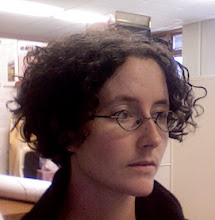I opted out of the morning hike with Egbert Leigh (resident scientist who gave us our intro lecture last night covering the history of ecological research at BCI) in favor of birding with Neil and Becky. Egbert felt 18 people was too many for a reasonable hike, so we had his blessing.
The forest here is thick and palmy. The dry season is more distinct than at La Selva, but it's still a rainforest. So very green, but with a thick layer of crunchy fallen leaves. The island was formed ~1914 when the river was flooded to form Gatun Lake, the central part of the Panama Canal. Biologists previously working in the area teamed up with entomologists associated with the canal (studying malarial mosquitoes) to make the island into a preserve for research. When it was first flooded, 1/3 to 1/2 was deforested for wood and agriculture. The forest has recovered admirably; your average person would never guess it had been pasture less than 100 years ago. But there are practically no big trees, and still some residual early successional species in high abundance (like free-standing, i.e. non-strangler, figs).
At any rate, I hadn't seen that many palms and ant-birds since La Selva, or that many ticks since Corcovado. I don't know what makes good tick habitat, but I must have picked 200 off of my clothes over the course of the walk. And I stayed on trail. Neil was seduced into the woods by the call of the elusive Northern Bentbill. He found his bird, but came back with thousands of tiny ticks -- he must have walked into a few balls of seed ticks in the woods. Being a stoic biologist, he continued on the hike, turning back only when it was time for lunch. After we ate, he stripped off most of his clothes and 4 of us took duct tape and tweezers to every bare surface of his skin. It was an excellent demonstration of primate grooming behavior. Kellie got pictures. After seeing that, the only thing that will motivate me to leave the trail is an aggressive puma.
We had a series of seminars in the afternoon from different grad students based at BCI. A couple were on the fig-fig wasp system (which I LOVE), one looking at whether figs punish wasps that don't pollinate, and one one the physiological differences between strangler and free-standing figs. There are 16 species of figs on BCI! We also heard about BCI's awesome automated radio telemetry system, which gives locations for collared animals every 4 minutes. They've even put them on euglossine (orchid) bees, and rodent-dispersed seeds. Then there was a hydrogeology talk, and one on ant behavior. After dinner we heard a STRI postdoc practice his job talk on gene dispersal in tropical trees. Overall, I was impressed with the advantages of doing research in a place as intensively studied as BCI.
Tomorrow I think I'm going to catch the 6:30 ferry and spend the day hiking on Pipeline Road with Becky and Neil. It's a road that the US government cut straight through the rainforest in WW2 as an alternate route (mostly for oil transport) in case the canal was bombed. Now it's basically just used by ecotourists, mostly birders; the world record for most birds seen in one day was made here. Something like 530 birds. We'll see how we do.
Subscribe to:
Post Comments (Atom)

No comments:
Post a Comment